This week, how plants keep track of time, how scientists are breeding cereal crops with ancient varieties to boost diversity and yields, how insects carry viruses between plants, and the chemical in smoke that triggers fire-dependent plants to germinate. Plus, printing new body parts, the workings of tornadoes and the bug behind potato blight...
In this episode
01:00 - Why can't penguins fly?
Why can't penguins fly?
The ability to fly is an adaptive trait in birds, but at least five lineages of  seabirds have lost this skill over time, penguins among them.
seabirds have lost this skill over time, penguins among them.
It was previously thought that as many flightless birds live in areas with few predators and low food supplies that they needed to direct their energies towards collecting food from the sea - so evolving to dive rather than fly.
But birds like penguins also have to travel huge distances between their feeding and breeding grounds (a task much more easily achieved by flight); and some flightless diving seabirds live in areas with good food supplies. So Kyle Elliott and the team from the University of Manitoba in Canada thought there must be another reason why birds would evolve to lose this useful skill.
They looked at the energy usage of two types of birds, thick-billed murres who use their wings to propel themselves through the water and Pelagic Cormorants who use their feet.
The paper, published in PNAS this week, revealed that the thick-billed murres had an exceptionally high energy expenditure when flying (around 31 times their metabolic rate at rest), much higher than the Cormorants who are less specialised to dive.
They concluded that, by evolving to be good at diving owing to a decreased wingspan, larger wing bones, an increased body mass and muscles specialised to beat at low frequencies, the energy expenditure required for flying increases. They therefore hypothesised that there is a fitness valley between seabirds specialised to fly and dive and at a certain point if a bird specialises for diving too much they lose the ability to fly, just like penguins.

03:56 - Itch-sensitive nerves discovered
Itch-sensitive nerves discovered
A key part of the neurological signalling system that conveys itching sensations has been unravelled by US scientists, paving the way for the development of more effective treatments for eczema and other itchy conditions. That there are nerve cells that uniquely signal itching in the skin was already known, but these couldn't be identified from amongst the myriad other neurones supplying the body surface. Now, writing in Science, Santosh Mishra and Mark Hoon from the National Institute of Dental and Craniofacial Research in Bethesda, Maryland, have found a way to pick out these cells, and they've identified the nerve transmitter chemical that they use to send itch signals brainwards. The scientists made the breakthrough by coming through the genes that are routinely turned on in nerve cells that supply the skin. They noticed that a small population of the nerves that are equipped to pick up on pain and temperature stimuli were exclusively also expressing a gene called Nppb (natriuretic polypeptide b). Knocking out this gene produced mice that had normal responses to pain and temperature but were incapable of becoming itchy. The Nppb signal normally activates a second group of nerve cells inside the spinal cord, and these spinal neurones then relay the signal to the brain using a second nerve chemical, identified previously, called GRP (gastrin releasing peptide). Now that this pathway has been understood, and Nppb identified as the critical first chemical in the chain that sounds the itch alarm, it opens the door to developing novel therapeutics to selectively block chronic pruritus.
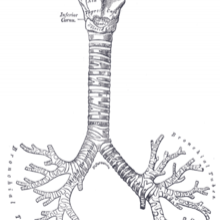
07:29 - Printing an artificial windpipe
Printing an artificial windpipe
Scientists have used 3D printing techniques to construct a new temporary windpipe and successfully treat a child born with an airway obstruction.
Twenty month old Kaiba Gionfriddo has tracheobronchomalacia, a 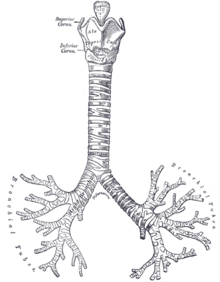 condition which affects the trachea, the long tube which connects our larynx (or voicebox) and our lungs.
condition which affects the trachea, the long tube which connects our larynx (or voicebox) and our lungs.
The role of this strong cartilaginous tube is to keep the airway clear, but patients with tracheobronchomalacia suffer from flaccid cartilage, meaning that the airway can collapse and obstruct breathing.
This condition affects 1 in every 2,200 children, and while most grow out of it, 10% of cases are serious and some children, like Kaiba, regularly require resuscitation.
But Glen Green and his colleagues at the University of Michigan were able to treat Kaiba by using a 3D printer to produce a plastic tracheal splint, a small hollow tube which could keep his airway open.
Rather than construct a permanent repair, the team instead used polycaprolactone, a bio-compatible and bio-degradeable polyester which, placed inside a person, slowly breaks down over a number of years.
This treatment was carried out in February 2012 and Kaiba was able to be taken off a ventilator 21 days after treatment. He has had no difficulty with breathing since this time. The tracheal splint should biodegrade within about 3 years, the same amount of time that it will take for his trachea to grow into a healthy state. This means the small tube will not be around to obstruct his airway when he's older.
The team hope that the 3D printing process can be used to produce other tissue structures in the future and have already begun building ear, nose and bone structures in pre-clinical models.
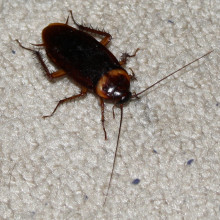
09:28 - Cockroaches Lose Their Sweet Tooth
Cockroaches Lose Their Sweet Tooth
In just 30 years cockroaches have evolved the ability to detect and avoid the traps commonly used to deal with them! Since the 1980s, the mainstay of cockroach control has been lures loaded with an insecticide-laced glucose bait that's impregnated onto a sticky surface. The sweet-toothed bugs would crawl inside and binge on a toxic feast, becoming stuck fast in the process. But now many of the insects - dubbed "glucose averse" - actively avoid such traps thanks to, it turns out, a switch in their taste detection system that has turned glucose from a treat into a deterrent. Writing in Science, North Carolina State University scientist Coby Schal and his colleagues recorded electrical signals produced by the tastebuds of both the new glucose-averse as well as traditional non-glucose-averse roaches when the insects were exposed to different flavours. Cockroaches have at least four different types of tastebuds, known as gustatory receptor neurones (GRNs). In normal "old school" cockroaches, GRN1 recognised sweet flavours, firing of a barrage of electrical spikes when glucose or fructose sugars were presented. GRN2, on the other hand, responded to the bitter taste of caffeine, which cockroaches are known to avoid. But, in the new glucose-averse insects, glucose only poorly stimulated the sweet-detecting GRN1 but triggered a salvo of activity in the normally bitter-responding GRN2. Fructose, on the other hand, triggered only GRN1, as expected. This shows that the animals have modified their taste receptor system so that they now register glucose as a bitter taste that they want to avoid. To find out how widespread this finding is, the researchers collected 19 wild-caught specimens from the field and tested them. Seven of them showed this altered behaviour. The team argue that the change has occurred through the strong selective pressure applied by the widespread use of glucose-baited cockroach traps. Insects with this adaptation would avoid the traps and live to breed another day, progressivly enriching the trait in the population...

12:53 - Quickfire Science: Oklahoma Tornado
Quickfire Science: Oklahoma Tornado
Tragedy struck Oklahoma this week, when a massive tornado at least a mile wide ripped through the town of Moore, leaving at least 24 people dead. Here's your Quickfire Science on these destructive forces of nature:
Pete - A tornado is a rapidly rotating column of air, which descends from the base of a thunderstorm down to the ground.
Elena - The most powerful tornadoes often form underneath large rotating thunderstorms, called supercells.
Pete - There are several theories about how tornadoes form under a supercell, but one possible way is from wind shear. This is when winds at two different heights blow in different directions or at different speeds.
Elena - The clash between these two winds can cause a cylinder of air to rotate around a horizontal axis, which can then be tilted vertically towards the ground by warm air rising within the thunderstorm.
Pete - Given the right conditions, this vertical spinning cylinder of air can become a tornado.
Elena - Tornadoes occur all over the world, but most commonly form in North America, especially in the central plains of the United States, nicknamed Tornado Alley.
Pete - Scientists think they are so frequent here because warm, rising air from the Gulf of Mexico is focussed into thunderstorms by cool, dry air from Canada. Dry winds blowing east from the Rocky Mountains provide the wind shear which drives the rotation of the storms.
Elena - Modern methods of detecting tornadoes include using satellite data as well as radar to identify the high wind speeds.
Pete - The US National Weather Service's Storm Prediction Center uses these new techniques, as well as a network of voluntary storm spotters across the country, to provide a tornado warning system to communities at risk
Elena - Warnings for Monday's disaster in Oklahoma were sent out 16 minutes before the twister hit the ground, earlier than the average time of 8 to 10 minutes.
Pete - The strength of a tornado is measured from 1 to 5 on the Enhanced Fujita scale, which looks at the amount of damage caused to structures.
Elena - The Oklahoma tornado had an Enhanced Fujita score of 5, the most powerful rating, with wind speeds of over 200 miles per hour giving it the power to sweep away strong buildings and overturn cars.
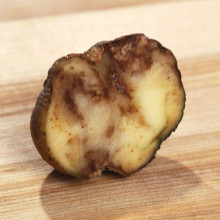
15:12 - The bug behind the potato blight
The bug behind the potato blight
with Dr. Sophien Kamoun, The Sainsbury Laboratory
This week, researchers from Germany and the UK identified the pathogen that caused the Irish potato famine which killed a million people in the mid-19th century. Sophien Kamoun heads the Sainsbury Laboratory in Norwich where this work was carried out.
Sophien - We knew that the pathogen called Phytophthora infestans. a fungus-like organism, was the agent of the potato blight that caused so much havoc in the 19th century and essentially triggered the Irish potato famine. What we didn't know is which strain caused the disease at that time. So, what we did is we went back to herbarium specimens from museums, extracted DNA from the specimens and we were able, using the latest DNA technology to sequence the genome of the pathogen and identified the strain that caused the disease in 19th century.
Chris - I'm intrigued to think that people kept leaf specimens from affected plants from more than 150 years ago.
Sophien - I know. There's a lot of interesting hidden treasures in all these museums. There's millions of herbarium samples and we stored in museums and that are studied usually to identify the species by looking for instance at flowers and the morphology of the leaves and so on. But in this case, we're able to do something quite cool really to actually look at the genetic makeup of the organism that were in those leaves.
Chris - So, you ground up some of the samples of leaves extracted genetic material which would've included both the genetic material of the potato and the genetic material of the blight that killed the plant.
Sophien - Yes, exactly. So, we cut small pieces of the leaf and we're able to analyse both the plant and the pathogen and in this case, in this study, we focused on the pathogen that was the interesting bit.
Chris - But people have as you say known that this was a fungus that was knocking around that did this. So, what was the big question that needed to be answered here, that your researchers enabled us to fill in a mixing gap with?
Sophien - Well first of all, you know it's not a fungus. It's a fungus-like organism, so I've corrected you. Sorry about that, but it's a different type of microbe, but it does look like a fungus. So often, people refer to it as a fungus. There are many strains of this pathogen. What we discovered was that it's a new strain, we called it HERB-1 that caused the blight in 19th century and this strain apparently is gone. It's not around anymore.
Chris - Why do you think that is? Is it that it was so good at devastating potato plants that as a result, people just stopped growing susceptible species and it ran out of plants to infect?
Sophien - No, we don't think so. What probably happened is that as potato breeding started and took off in the 20th century and scientists starting breeding better potatoes by crossing them to wild derivatives of the potato, probably HERB-1 was at a disadvantage compared to other strains. And we know that in the 20th century, HERB-1 was replaced by another strain we know as US-1 and then later on in the 20th century, US-1 was replaced by additional strains.
Chris - So, is the sort of model then that you have plants that are susceptible to one of these organisms, the organism becomes more successful at working its way through those plants and then the plants change or new types of plant come along which are more resistant, and so, the pathogen changes and we're just seeing a sort of arms race playing out.
Sophien - That's certainly part of the equation, but in fact, what's amazing about this pathogen Phytophthora infestans, the potato blight pathogen is how adaptable it is. It's very good at adapting to new resistant varieties that breeders are releasing.
Chris - How does it do that? What makes it so successful?
Sophien - Well, this is actually work we've been describing in the last few years and we discovered that this pathogen has an amazing genome. In fact, we describe this genome as a 2-speed genome. It's composed of two different type of compartments if you like. One compartment contains the housekeeping genes, the key gene, the pathogen needs to be a microbe. The second set of compartments contains all the virulent genes that are important for the pathogen to infect plants and that second compartment is evolving and changing much more rapidly than the slow evolving housekeeping compartment if you like.
Chris - Do you know why those bits of the genome change so fast whereas bits elsewhere in the genome don't? How does the organism do that?
Sophien - I wish I knew. That's a very interesting topic we're studying.
Chris - Because a similar sort of story is playing out with bananas, isn't it? We know that bananas are cloned plants so they're all genetically identical. So, all it takes is one type of fungus organism to come along which is very good at exploiting one of these plants and then all of a sudden, all banana plants of that particular type are going to be susceptible because they're all cloned.
Sophien - That's an interesting point. This is one of the issues with modern agriculturists, having monocultures in the case of the bananas it's the most extreme case because all those bananas we eat have the exact same genetic makeup. So, these makes these plants very susceptible to pathogens, especially pathogens that are very good at adapting and evolving, and dealing with these crops. So, the challenge really for us as plant breeders and plant biotechnologists, is how can we generate enough variation, enough new varieties to really keep up with this rapidly evolving pathogens?
Chris - So, why did the Irish potato blight happen when it did? Do we have an insight into what caused this perfect storm and why doesn't it happen now?
Sophien - Well, there's two facets to your question. The first one is that we have to keep in mind that in the 1840's, the disease was new to Europe. So, for 3 centuries, potatoes were cultivated in Europe and somehow, the pathogen never made it to the European continent. So, in that case, it was basically a new pathogen being introduced to a region that hasn't even seen it before. It's similar to what we're seeing today with the ash dieback fungus for instance which showed up in the UK recently and essentially has all these susceptible trees to infect. So, that's what happened at that time. it didn't really require particularly aggressive pathogen. The potatoes were susceptible and the pathogen took off like wildfire.
Chris - Arguably, there are lots more potatoes around now that fall into that camp than there were in the 1850s when this happened in Ireland. So, why hasn't it happened now more frequently?
Sophien - It's actually happening now. Potato blight is still a very important disease these days. Potato crop is the third most important food crop in the world and the estimates currently are that the potatoes lost to the blight are enough to feed tens of millions of people. So, it's still an important problem. The difference is now, we can manage it with agricultural practices and with using chemicals and occasionally some resistant varieties. So, the disease is very much around. It hasn't gone.
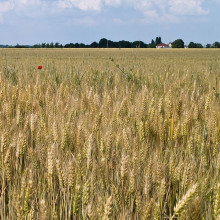
22:45 - The Innovation of Super Wheat
The Innovation of Super Wheat
with Dr Phil Howell, National Institute of Agricultural Botany
Ginny Smith visited the Innovation Farm run by the National Institute of Agricultural Botany in Impington, Cambridgeshire to find out about a new strain of wheat they've developed using ancient plant strains.
Ginny - So, I've come to Innovation Farm to talk to Dr. Phil Howell about a special 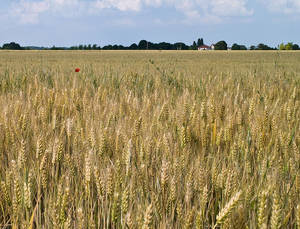 type of wheat he's breeding. So, what exactly is it that you work on?
type of wheat he's breeding. So, what exactly is it that you work on?
Phil - We're trying to move some of the genes from the wild ancestors of wheat into modern wheat varieties.
Ginny - And why is that important?
Phil - During the domestication of any crop, there is inevitably useful variation that's grown away as the farmers select what they want to take forwards. Wheat is a complex beast. It has three sets of chromosomes, it's called a hexaploid and we know that two of those sets came from one ancient parent and a third set came from a different ancient parent, and it's this third set that there's less variation in. So, that's what we're trying to tap into.
Ginny - And why is wheat so important? Why have you focused on it?
Phil - It's the UK's most widely grown crop. So, it's grown on about 40% of the UK's arable land and it's in so many food stuffs. We're also moving into a situation where the world population is increasing all the time and there is all sorts of pressure on agricultural land. I mean, as you can see, if you look out the windows, some of our trial fields are being built on. So, this is pressure from housing developments even here in Cambridge. If there's less agricultural land available, we need to be getting as much as we possibly can out of the land.
Ginny - And why is less variation bad?
Phil - It means that there is just less raw material if you like for plant breeders to get their teeth into and one set of genes in wheat in particular there's little variation in modern varieties. So, we're trying to put some variation back in. That will then help commercial breeders to solve problems that we don't even know exist yet. So, it might be new diseases, it might be things caused by climate change. You can never tell what the future is going to bring.
Ginny - And how do you go about introducing this variation?
Phil - There's an international research place in Mexico called CIMMYT. So, we took some of their synthetic hexaploids and crossed them with UK varieties and it works so well, we're now actually making our own synthetic hexaploids here as well, but they're not quite as far advanced.
Ginny - So, how do you actually get to this synthetic wheat and what exactly do you mean by it?
Phil - By synthetic, I mean, it's not made out of plastic or anything. It's a living plant. How you make synthetic is you take a different form of wheat call durum wheat which nowadays, we make pasta from and you cross that with a species called wild goat grass and bring in variation from this third set of chromosomes.
Ginny - And when you say that you cross these varieties, what exactly do you mean? How do you go about doing that?
Phil - So, when it starts to flower, we have to move the male parts, the anthers, but you don't remove the female parts of the stigma. You keep that there. So essentially, we're turning a flower that has male and female parts in to a female only flower. We then cover it with a clear cellophane bag to keep any stray pollen out and then we take an ear from what we're using as our male. So, in a normal cross, it would be another wheat variety, where we make synthetics this is the wild goat grass and we introduced the pollen and it trickles down. You can actually see it floating down like yellow powder, lands on the female parts and hopefully, fertilisation happens.
Ginny - Now, this sounds like quite an old-fashioned way of crossing things. Is there not more modern ways you can do this, genetically modifying things or something like that?
Phil - It does seem old-fashioned, but old-fashioned things can work very well. So, the cross itself is, as you say, it's the way plant breeders have been crossing for 100 years or so. The tissue culture is a bit more cutting-edge. So, if we let the seed develop by itself, because we've crossed two different species together, the pasta wheat and the goat grass, normally, the seed would just shrivel up. It doesn't have the food supply, the flour inside the seed, so that's why we have to open the seed up, remove the embryo, and give it some food from the petri dish.
Ginny - Okay, so we've now headed down to your lab and there's lots of big machines. You can hear the sort of humming in the background and I can see some petri dishes and microscopes, it looks like a properly scientific area over there.
Phil - Petri dishes, we can certainly have a look at.
Ginny - So, I can see some seeds on this petri dishes. They're a kind of reddish colour and some of them have little sproutty bits coming out of them. Some of these others, they look at bit more like you'd expect the wheat seed to look, sort of like unpopped popcorn. And again, some of those are sprouting. So, what's the difference between these two kinds of seed?
Phil - The ones which are in red, these are actually commercial variety and we're just - we call it pre-germinating. So, we're trying to get them so that they break dormancy and they germinate. Sometimes if it's old seed, you have to try a bit harder to get it to germinate and that's what we're doing here. The red colour is actually a seed treatment. So, it's a fungicide to stop any diseases on the surface of the seed, stopping it from growing properly.
Ginny - Okay and do they germinate quite happily in a petri dish? I would've thought that would be a very unnatural environment for a seed.
Phil - Yeah, you give them a bit of water and they will as you say, swell up and look like unpopped popcorn and then you'll see the shoot start to break through and the root start to break through. Again, some of the old seed, it can be a bit tricky to get it going. So, we have little tricks like if you grow them in these petri dishes and then you alternate. So, they spend a night in the fridge and the day out in the warm, the night in the fridge, the day out in the warm. Eventually, that can get them going.
Ginny - And what are the advantages of doing it this way versus something like genetic modification?
Phil - GM is a very focused, targeted technology. So, you normally have a particular gene of interest that you want to transfer from one plant to another plant. Here, we're bringing the whole lot across. Some of it might be useful. Most of it will be absolutely rubbish. We look for what we want once we've made the cross.
Ginny - And have you found any benefits so far?
Phil - We've seen some interesting results suggesting that if you put much less fertiliser on these crops than conventional wheat varieties, the yield doesn't drop off as much as you expect. So again, that suggests that the root system is more active. They're better at scavenging the little nitrogen that you've added.
Ginny - Are there going to be any negative environmental connotations to this sort of thing. If goat grass is a weed, could we see wheat running rampage through our forests and fields, overtaking hedgerows and that sort of thing?
Phil - Becoming a super weed? I really hope not because it's not the goat grass itself that we're putting into the field and even if some of the goat grass characteristics are transferred into modern varieties, we're still doing selective breeding. We're not just moving everything forwards. We're taking hopefully, the best of both worlds.
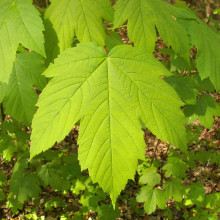
30:10 - Can plants keep time?
Can plants keep time?
with Dr Alex Webb, University of Cambridge
We humans have body clocks or circadian rhythms that control when we wake up, 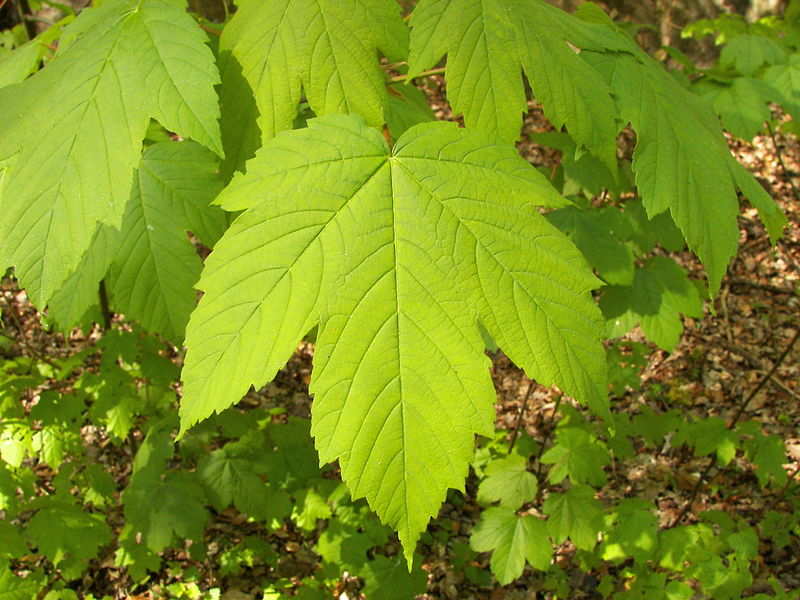 when we go to sleep, and even how hungry we feel. It's why we succumb to jetlag when we go overseas. But plants also have daily rhythms that affect the way they grow and also how they transport nutrients. To find out how these work, Kate Lamble spoke to Alex Webb from the Department of Plant Sciences at Cambridge University and she started by asking exactly what a circadian rhythm is
when we go to sleep, and even how hungry we feel. It's why we succumb to jetlag when we go overseas. But plants also have daily rhythms that affect the way they grow and also how they transport nutrients. To find out how these work, Kate Lamble spoke to Alex Webb from the Department of Plant Sciences at Cambridge University and she started by asking exactly what a circadian rhythm is
Alex - It's any biological rhythm that has a period of 24 hours and which can persist in constant conditions. So, the one we're most familiar with is the sleep-wake cycle.
Kate - So, in me, it changes how awake I am and when I'm awake. What does it change in plants?
Alex - Well, it regulates nearly every aspect of plant biology. The one that I quite like to tell people about is in fact that plants grow over 24-hour cycle. So, just like you and me actually, plants do their maximal growth at the end of the night. It regulates photosynthesis, it regulates water flux through the plants, it regulates their ability to sense the environment, so plants are more sensitive to cold signals during the day than they are at night, and all aspects of plant biology.
Kate - When I'm aware of sort of how much light is around, I've got this environmental stimuli that I can see, how do plants recognise the environmental time signals that tell them when it's day and when it's night?
Alex - Now, you ask a difficult question. We know that they measure both temperature and light. And we know that they measure the rhythms of temperature and light and plants measure light using a series of proteins we call photoreceptors. There's a subset for red, and a subset for blue, and we know that those are involved in setting the clock. So, for example, the clock is re-set every morning by blue and red light signals. But actually, how that happens, we don't know. And then when it comes to temperature perception by plants, we know that they can measure temperature. They can exquisitely measure temperature, but we have very little idea how that works. And we know that they can in fact incorporate that temperature measurement into adjusting the clock.
Kate - Now, my circadian rhythm is controlled by my brain, but what is a plant's circadian rhythm controlled by?
Alex - Well, what an interesting idea. Is your circadian rhythm controlled by your brain or is there a circadian rhythm in your brain that controls all of you?
Kate - That's a very interesting question.
Alex - Which I think is probably the second of the two. How it works in mammals like ourselves is that there's a group of nerves, about 20,000 nerves in the brain which form a timing mechanism and they have this 24-hour rhythmic activity which they then transmit through to the rest of the organism using hormones. Plants are much more decentralised system and so in fact, every cell has a clock and that clock is made up of a suit of genes switching each other on and off with a rhythm, a bit like the clock work of an old fashioned watch. And so, all of these cells have a clock and one of the things we're interested in at the moment, I think a lot of plant biologists are interested in this, whether these clocks actually communicate between each other within the cells and is there a coordination between them or is each cell doing its own thing, but it just all occurs at the same time.
Kate - I was going to ask that because in order to be able to reset the clock, is each one of those cells communicating with the sensor that is sensing the light and the temperature that we were talking about earlier.
Alex - At least in leaf cells, each cell has its own light sensor. So, these proteins are present in all the leaf cells. The root is more interesting and there's a lot of interest at the moment because the roots grow in the dark and there's some nice work from laboratory in Glasgow, Hugh Nimmo's Laboratory and it does seem that there's some signal that comes from the leaves down to the roots and affects the clock. And that signal is probably sugar.
Kate - Why do we think that it's sugar that's communicating these signals between the different cells?
Alex - Well, if you stop photosynthesis using a drug then the root circadian clock functions differently and so, the most likely substance is sugar. And in fact, my group works on this problem as well.
Kate - I was going to say, you're particularly interested in how photosynthesis is linked to this circadian rhythm. Why would that be affected by the difference between day and night?
Alex - Plants harvest light energy and they capture it using chlorophyll and the electrons which get excited by the light energy are then used to make sugars from carbon dioxide in the air. This is an incredible amount of energy that moves through the plant and if the plant isn't ready in the morning to make all the sugars and use all that energy that it harvests, that energy will go off and do other things. And most of those things that it will do will be fairly destructive to the cells. So the plant needs to be ready at dawn to harvest all this light energy. So, the clock seems to modulate photosynthesis. So, it's more active during the day.
Kate - If plants aren't photosynthesising at night, how do they have enough food to keep their cells going during that period?
Alex - The spare sugars they make during the day are converted to starch and then the starch is broken down all through the night to keep the plant alive. And in fact, some wonderful experiments from the John Innes Laboratory, Allison Smith's lab in Norwich has shown that they actually are able to anticipate when dawn is, using a circadian clock and consume all available starch right at dawn. And if you artificially extend the night by 2 hours, the plant begins to starve and actually cannot grow because they've consumed all of their stored energy. And so, they actually anticipate when dawn is, use up all the energy that's stored at night, and then get ready to photosynthesise in the morning.
Kate - If we're beginning to understand the genes that control this circadian clock, can we exploit that in some way for farming?
Alex - Yeah, I think definitely we should be able to. Again, this is early days. Really intensive work on the circadian clock on plants has only been going on for about 15 years. But one of the things that we found out is that some of the genes which are very important for the domestication of crops are actually involved in the circadian clock. So, that tells us that early breeders were actually unknowingly selecting for altered behaviour of genes that form part of the clock. Now, what we don't understand mostly is why, but there are other areas where there's really quite a large potential for agricultural exploitation of the circadian system.
For example, the circadian clock of plants provides adaptation to help deter insect feeding. And so, if you take plants which don't have a functional circadian clock, they are much more damaged by insects than plants that do have a functional circadian clock. Now of course, that's a big step from that observation and then working out how we can take that observation and apply it. How can we get benefit? So mostly, what we seem to be able to do at the moment is make plants worse by interfering with the circadian clock. The next step is to find ways to make them better.
Kate - If we're thinking about trying to change the circadian clock of certain plants, how can we go about doing that? Is it a matter of genetically modifying and putting in the genes that we know are good circadian rhythm controllers?
Alex - That would be one approach. There is some evidence, Monsanto have I think it's a soya bean which has about 5% increase in yield which is an enormous increase in terms of agriculture and that is through genetic manipulation of a gene which is closely related to the circadian clock.
Another approach which our lab has used is we've looked for chemicals which affect the circadian clock and we've identified one chemical which can change the speed of the circadian clock and we're interested in finding out how that works. Actually, we have a few hypothesis but we don't know why the chemical is changing the speed of the clock. Interesting thing is, this chemical that we found surprisingly has exactly the same effects in circadian clocks across the kingdoms. It actually makes the clock run more slowly and it does that in plants, and then a year later, it was found after we discovered that it also has exactly the same effect in mice. And there's a lot of hypotheses about how it works, but as yet, we don't know.
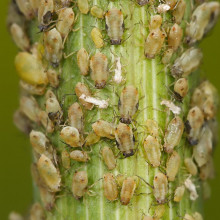
37:57 - The Trouble with Sapsuckers
The Trouble with Sapsuckers
with Dr Saskia Hogenhout, The John Innes Centre
Just as we fall victim to biting insects that want to drink our blood, plants are 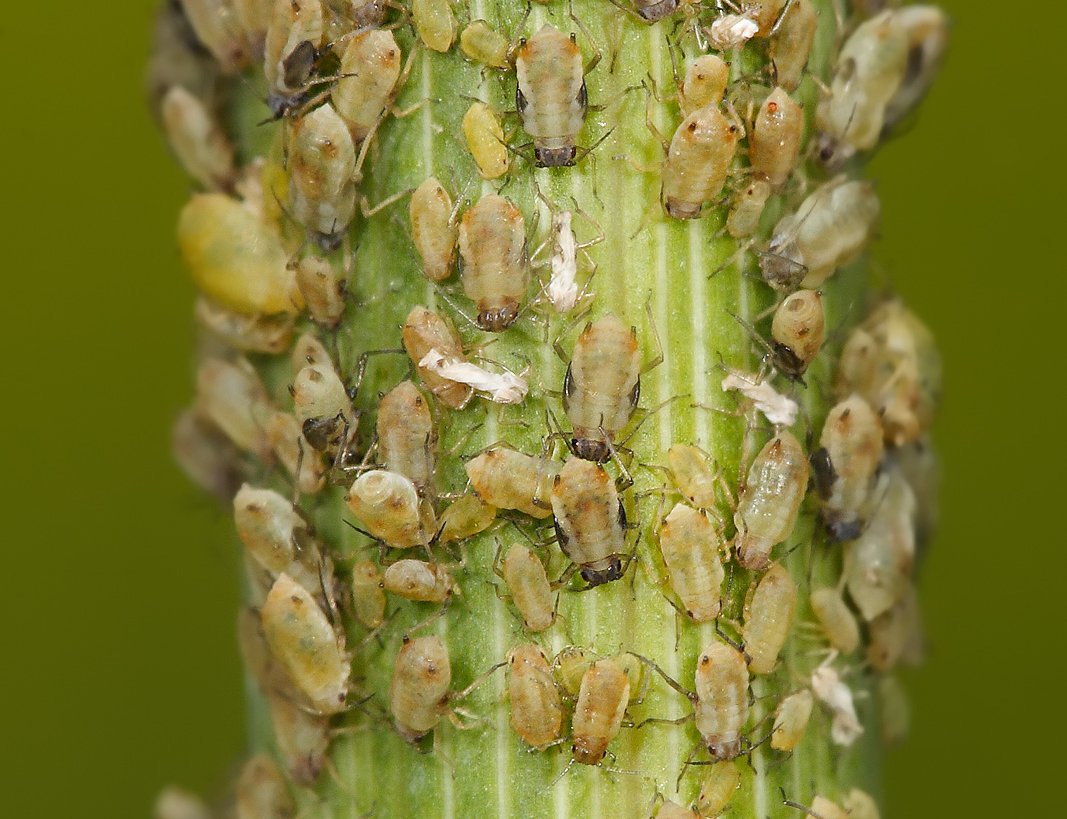 assailed by sap suckers. And in the same way that mosquitoes give us malaria, some of these plant attacking insects infect their hosts with bacterial and viral disease too. Saskia Hogenhout is from The John Innes Centre in Norwich.
assailed by sap suckers. And in the same way that mosquitoes give us malaria, some of these plant attacking insects infect their hosts with bacterial and viral disease too. Saskia Hogenhout is from The John Innes Centre in Norwich.
Chris - So, what sorts of insects do you study?
Saskia - I work on sap feeding insects. These are aphids, leaf hoppers, plant hoppers, psyllids, and they all have like stinging mouth parts that can reach through the phloem and to the vascular system of the plant and drink the sap of the plant like mosquitoes do.
Chris - Yeah, so it's directly analogous. They're sending a part of their mouthparts into the flesh and then into the vessels of the plant.
Saskia - Yes and these vessels carry the sap stream of the plant so the sugars that are transported to the leaves for metabolism.They are the bloodstream of the plant and so, the insects feed on this like mosquitoes do from blood.
Chris - Indeed and just as I mentioned, in the same way that mosquitoes can transmit things like malaria and viruses in us, these organisms pouncing on one plant and then another can spread diseases.
Saskia - Yes, so the insects, they spread the disease and some of the viruses, maybe most of the viruses, they are completely dependent on the insects for spread in nature and some bacteria as well.
Chris - So, what sorts of viruses are these?
Saskia - They are in the plants and they carry it around by the insect, but they don't infect the insect. Other viruses, they circulate in the insect, but they don't amplify in the insects but the insect can still carry them around.
Chris - When you say amplify, you mean as in, they get into the insect and then they grow and increase their number in the insect, so the infectious dose in the insect goes up.
Saskia - Yes and other viruses, they amplify even more. So, they really use the insect also as a host for replication and for multiplication, and colonisation.
Chris - That's extraordinary because this means you have a virus which is capable of infecting an insect's cells and growing in the insect, and infecting the cells of a plant which is a very, very different beast, if that's the right word.
Saskia - Yes, that's right. So, they're very different hosts and maybe the plant and the insects are much more different than for example mosquito and a human.
Chris - So, is it quite literally like malaria where the sap sucker will land on the plant, drink some fluids, and because the virus is circulating in the plant fluids, some gets into the insect, and it then departs, goes to another plant, and when it drinks from that second plant, it just happens to pass the virus on to the new recipient.
Saskia - Yes, so depending on the virus, this insect can acquire the virus and then transmit it immediately. Sometimes it takes longer. So, sometimes it takes 10 or 20 days or longer.
Chris - What do the plants do about this because given how widespread this sort of herbivory and plant parasitism is by sap suckers and things? Do the plants have a sort of immune response to stop this happening?
Saskia - Yeah, that's an interesting question because the majority of the viruses but also insects are specialised. So, they can only really infect certain plant species. And so, it's often a very specialised interaction, but only a small fraction like 10% of the insects species that will feed only on a plant can feed on many different plant hosts and those are also often the most efficient factors of viruses because they can transmit a virus from one plant species to another and often from weeds that surround the crop fields to the crop.
Chris - What about in winter time? Where do the viruses go because if you're living in an insect that disappears in winter and a plant that withers and dies in winter, how do the viruses persist?
Saskia - So, sometimes they stay in the plants like the weeds that surround crops. So, the crops that are maybe not there anymore, but the weeds stay around and sometimes they stay in the insect vector as well because the insect can last the winter and they stay quiet and they don't do much, but they still carry the virus. And when the insect appears again in spring then it can transmit it to new plants.
Chris - Do any of these viruses get into the genetic material of the plants because in the same way, we see there are some viruses that lurk inside the genomes of humans? Can they lurk inside the plant genome and then come out again periodically when they want to?
Saskia - Not many plant viruses do that, no. Not many plant viruses. There are, as far as I know, not any, but there are bacteria that can do that. So, fragments of the bacteria can lurk inside the plant, but these are not transmitted by insects.
Chris - Indeed, but there are bacteria that are transmitted by insects in the same way as we've outlined these viruses aren't there?
Saskia - Yeah, there are several species of bacteria and some are also replicating or amplifying, colonising the insects. And some are only carried by the insect.
Chris - What is the impact on the plants of catching these bugs?
Saskia - They actually severely damage so they have stenting chlorosis as streaks, they don't form seeds, they don't form flowers, and when oil seed rape for example in the UK, can be infected by several viruses and they think it actually reduces yield by 30%.
Chris - Do they also render the plants susceptible to other infections? I keep bringing you along human analogies, but obviously, we can catch HIV. This damages our immune system and render us susceptible to infection by a whole lot of other low grade things that wouldn't normally bother us. Does the same thing happen with plants, with these sorts of bugs?
Saskia - Yes, actually, there's not many examples of viruses, but there are examples of bacteria and some of which I've worked on, that suppress the immune response of the plants and this plant then becomes then more susceptible to insect vectors which then can also then acquire those fired plasmas, so the bacteria again and then spread them around.
Chris - And just to finish, what about the converse because there's evidence that if we pick up certain virus infections, paradoxically, we can end up with a better immune system? Do any of these viruses or bacteria enhance the health of the plant as a sort of payback for having been infected with them?
Saskia - Yes, there are also examples in which they transmit the infected viruses and these viruses induce certain immune responses that are then inhibiting infection of other pathogens and bacteria. Or maybe even sometimes if the virus is not transmitted by the insect, they can also inhibit herbivory.

45:04 - A Smoky Beginning for Plants
A Smoky Beginning for Plants
with Dr Gavin Flematti, University of Western Australia
It's well-known that some plants depend on bush fires to make their seeds ge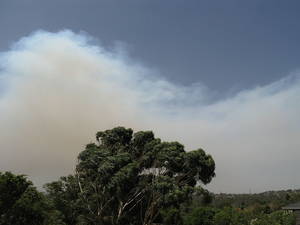 rminate, but how? Gavin Flematti researches this question at the University of Western Australia and he explained to Chris how he's discovered the chemical in smoke that's responsible.
rminate, but how? Gavin Flematti researches this question at the University of Western Australia and he explained to Chris how he's discovered the chemical in smoke that's responsible.
Gavin - It's been known for a number of years that fire in a landscape, once that fire has gone through when the next rain has come along, you get this sudden regeneration of growth of the native species. And some researchers at South Africa worked out that there were actually, chemicals in the smoke that were responsible for this effect. So, I sort of came on board and we were looking at trying to work out what the actual chemical compounds were that were responsible for this effect.
Chris - So, when you say something in the smoke was making this happen, it's not just that you burn everything out, the competition drops and some seeds happen to be there that survived the burning and they grow. There's actually an active process which is triggering seeds to grow, but only when there's smoke around.
Gavin - Yeah, that's right. The researcher in South Africa, Johannes de Lange, he was trying to germinate this species that was only ever seen after a fire, and he was trying everything he could think of to get it to germinate and it just wouldn't. So then, he smoked a small area out in the landscape there and came back sort of 12 months later, and lo and behold that species are germinated. So, he worked out that there was something actually in the smoke that was responsible for this effect.
Chris - So, how did you attack that problem? What approach did you take to try to work out what was going on?
Gavin - Well basically, I mean, Johannes de Lange had worked out that if you bubble a smoke through water, you got this product called smoke water and that was active on the seeds as well. So, we started with that. We then would mix that with organic solvents and try and extract that compound out of the solution, and then just lots of chromatography. So, we use a lot of ways to try and separate compounds until we're able to pin it down to one in particular compound.
Chris - So, you're growing seeds that are dependent on whatever this smoke is, to grow and then mixing them with different fractions of what had been bubbled through the water. So, you separated into all the different chemicals until you've got the one that does it.
Gavin - Yeah, well I mean, smoke contains out of 4,000 compounds it was a big task. So, it was multiple steps. Basically, we would just try and simplify the mixture to start with and as you say, take a lot of fractions, test those with the particular species. We were actually using a particular lettuce species that would germinate fine in the light, but in the dark, you'd only get about 30% or 40% germination. But then you'd give it the smoke compound, that would then bring that back up to 100%. The reason we used that, there was a quick turnaround of results, only 2 days whereas some of the natives take up to 6 weeks.
Chris - What are the chemicals that do it?
Gavin - We identified a compound. It belonged to a class of compound called butenolides and we've given it sort of the trivial name of Karrikinolide.
Chris - How does it work?
Gavin - Well, it's a very good question. We're still in the process of trying to work that out. We're now working with molecular biologists and geneticists at UWA and they're really trying to dissect what the key proteins are that it's interacting with. I mean, one way they're looking at this is they're creating mutated plants that don't respond to the compound. So, this particular plant we used Arabidopsis is like the lab rat of the plant world and we're lucky enough that it responds to our compound. And so, what they've done is now transform the plants so they don't respond, and then we're looking for what the key protein that's missing. So, it's quite a neat way of doing it.
Chris - What about this chemical makes it particularly appropriate to do that job of triggering that plant to germinate. Because if there are 4,000 chemicals in smoke as you've said, why did the plants pick that one?
Gavin - We're not sure. I mean, it's got some structural similarities to some other plant growth promoters, but we still haven't cracked how it's actually working yet.
Chris - Apart from being academically really interesting to know what it is that triggers things to grow off to burning. Will this be useful in any way? Could you use it to sustain, support, or trigger growth or for conservation efforts?
Gavin - Yeah, well our goal at the moment is trying to get a formulation that we can use in the field. At the moment, when we spray it on the ground as a synthetic material, it just don't seem to have the same effect as when we smoke an area and there's a whole range of reasons for that. It might be prone to oxidation, it seems to have some UV instability. But when it's present in the smoke mixture, there's other compounds there that are acting as sunscreens or anti-oxidants that are helping to stabilise it. So, that's part of the big project we have at the moment. It's trying to work out, well how can we stabilise this and formulate it so it's effective.
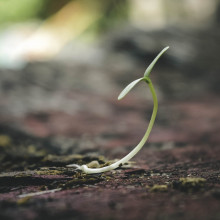
How do plants grow upwards?
Hannah - So, how do plants know to grow the way they do? Over to Dr. Paul Robson, Plant Biologist at Aberystwyth University...
Paul - Plants grow upwards because they're trying to get to the light to begin photosynthesis, but mostly germinate underground where there's little light to follow. And so, the plants actually use gravity to tell it which way is up. They will grow upwards even in complete darkness.
Hannah - Clever plants, but since leaves have no vestibular system like us humans using liquid in our ears to know which way is up, how do seeds in plants know which direction the sky lies in?
Paul - We know starch is important in sensing gravity and to do this, plants package starch into structure called statoliths. The statoliths are dense within the plant’s cytoplasm in which they're suspended. So, they sink due to gravity and it’s this movement that allows the plant to tell which way gravity is acting. Once the shoots have emerged from the soil, plants change their response again and mainly use light rather than gravity to determine where they grow. Incidentally, different parts of the plant respond differently to gravity. The shoots grow upwards, but the roots grow downwards, searching for water.
Hannah - And are there any other experiment we can do at home to test out this powerful effect of gravity?
Paul - You can see this if you put a seed in the middle of a big pot and let it grow for a few days. Then if you turn the pot on its side and let it grow for a few more days, the shoots should curve upwards and the roots curve downwards. Plants do this because they lack basic locomotion and so, they're forced to grow towards whatever they need.
Hannah - A lovely science test for the home. And if you have a bigger budget for experimentation…
John - Hi, I'm John Kiss from Oxford, Mississippi and we sent some plants into space. All week long, we’ve been giving some exciting video downlinks from the International Space Station which shows some cool new ways that plants sense light. Based on these results, we will be able to better grow crop plants in space and on other planets.
Hannah - So, it’s a mixture of light and gravity cues that combine to direct plant growth that seems important for sensing gravity and the plant’s surface senses light. And even in space where there's only a small amount of gravity, plants can grow and scientists are trying to understand exactly how.
Related Content
- Previous How do plants grow upwards?
- Next Tornado Science










Comments
Add a comment